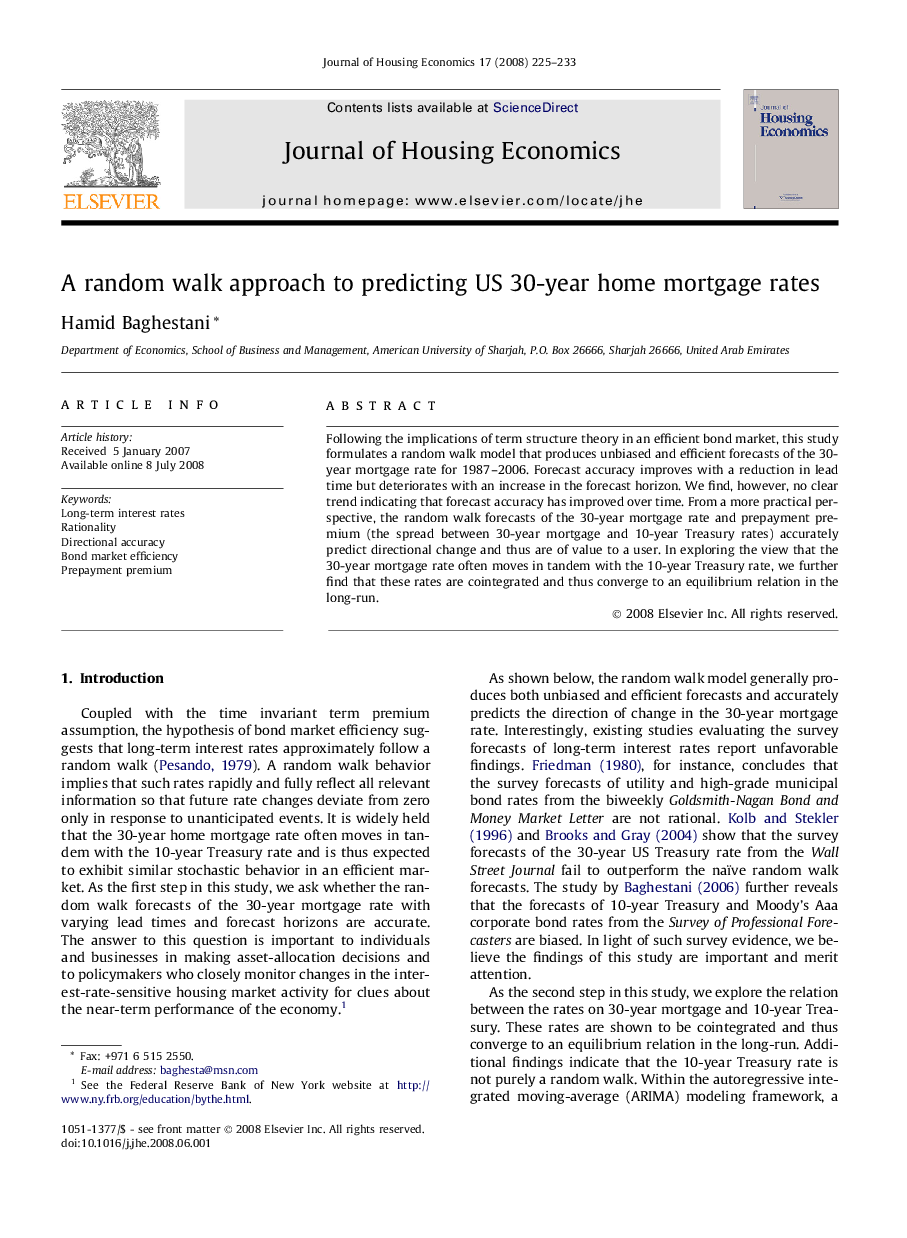| Article ID | Journal | Published Year | Pages | File Type |
|---|---|---|---|---|
| 962168 | Journal of Housing Economics | 2008 | 9 Pages |
Abstract
Following the implications of term structure theory in an efficient bond market, this study formulates a random walk model that produces unbiased and efficient forecasts of the 30-year mortgage rate for 1987-2006. Forecast accuracy improves with a reduction in lead time but deteriorates with an increase in the forecast horizon. We find, however, no clear trend indicating that forecast accuracy has improved over time. From a more practical perspective, the random walk forecasts of the 30-year mortgage rate and prepayment premium (the spread between 30-year mortgage and 10-year Treasury rates) accurately predict directional change and thus are of value to a user. In exploring the view that the 30-year mortgage rate often moves in tandem with the 10-year Treasury rate, we further find that these rates are cointegrated and thus converge to an equilibrium relation in the long-run.
Related Topics
Social Sciences and Humanities
Economics, Econometrics and Finance
Economics and Econometrics
Authors
Hamid Baghestani,
